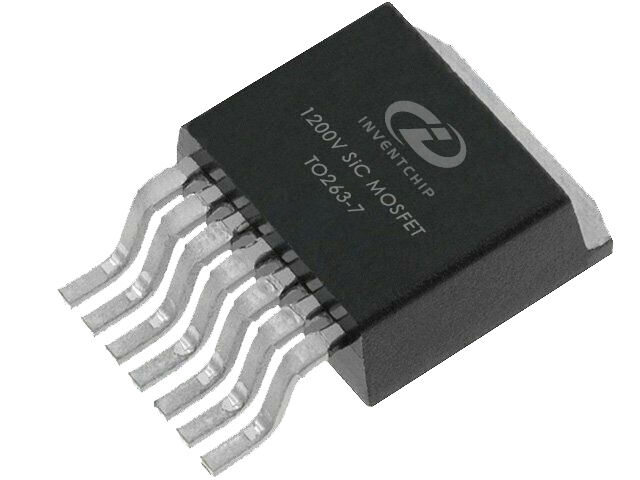Digunakan dalam pelbagai aplikasi di seluruh industri pembuatan, penerbangan dan EV, antara lain; SiC MOSFETs - atau Transistor Medan Efect Oksida Logam Silikon Karbida seperti yang sepenuhnya dikenali. Peranti baru ini merupakan lonjakan besar dari MOSFET silikon konvensional dan memainkan peranan kritikal dalam banyak teknologi, termasuk sistem telekomunikasi (backhaul), kawalan kuasa EV & aplikasi Sistem Suria.
Memilih SiC MOSFET yang sesuai memerlukan pemahaman asas dan juga pemikiran mendalam tentang angka-angka kunci yang berbeza. Memahami keperluan aplikasi untuk reka bentuk anda akan membantu anda memilih SiC MOSFET yang ideal, serta mengoptimumkan prestasi dan tempoh hayat.
Inilah sebabnya kelebihan SiC MOSFET begitu menarik dalam pelbagai aplikasi lain. Komponen premium ini mempunyai salah satu kecekapan tertinggi di pasaran, membolehkan operasi arus tinggi dengan penggunaan kuasa yang lebih rendah dan pengeluaran haba yang kurang. Selain itu, mereka mempunyai kelajuan tukar antara ON dan OFF yang sangat pantas (kira-kira 1000 kali lebih pantas daripada MOSFET silikon tradisional), yang membolehkan mereka dinyalakan dan dimatikan hampir secara seketika. Dan, dalam kes penggunaan pada suhu bawah sifar, SiC MOSFET adalah boleh dipercayai - satu kelebihan yang tidak mudah dicapai oleh komponen silikon piawai.
SiC MOSFETs membuat lonjakan besar dalam inovasi elektronik dan keselamatan dengan memberikan ciri teknologi yang lebih baik serta langkah keselamatan yang canggih. Struktur dan pembinaan yang kukuh membantu mencegah sistem daripada kelebihan panas atau penyalahgunaan, terutamanya dalam aplikasi perindustrian berprestasi tinggi dan industri automotif di mana kebolehpercayaan adalah kunci.
SiC MOSFETs digunakan dalam banyak sektor dan industri, termasuk tetapi tidak terhad kepada industri automotif. Ini adalah sifat penting dalam pelbagai bidang seperti kawalan motor, penukar suria dan sistem penggerak kenderaan elektrik untuk meningkatkan kecekapan aplikasi. Walaupun silikon masih mendominasi ruang teknologi kenderaan elektrik terutamanya disebabkan oleh kecekapannya dan atribut penghematan berat, SiC MOSFETs sedang menggantikan transistor bipolar gerbang terinsulasi tradisional (IGBT) dalam penukar suria dan komponen pemacu kerana kemampuan kuasa tak tergoyahkan mereka melalui dinamik penukaran tenaga yang berubah.
Jurutera reka bentuk perlu memahami ciri-ciri operasi bagi SiC MOSFET supaya dapat mengoptimalkan kelebihan prestasinya. Peranti ini serupa dengan MOSFET konvensional (Metal Oxide Semiconductor Field Effect Transistor) tetapi mempunyai penilaian voltan yang sangat tinggi, pemilihan pantas dan kemampuan menangani beban. Untuk berfungsi pada kapasiti tertinggi, komponen-komponen mestilah beroperasi di dalam penilaian voltan yang ditentukan sehubungan dengan kelajuan pemilihan dan pengurusan terma untuk mengelakkan pemanasan berlebihan yang boleh menyebabkan kegagalan komponen.
Selain itu, memilih jenama yang terkenal dengan perkhidmatan pelanggan dan produk berkualiti tinggi boleh meningkatkan lagi pengalaman pengguna yang melibatkan SiC MOSFET. Tumpuan khas kepada sampel ujian tanpa lesen untuk pengesahan dan sokongan sepanjang hayat selepas jualan membantu dalam memilih pembuat yang betul. Oleh kerana SiC MOSFET boleh bertahan dalam persekitaran yang lebih sukar sambil memberikan prestasi cemerlang, mereka cenderung bertahan lebih lama dan memberikan kebolehpercayaan yang lebih besar dalam sistem elektronik.
SiC MOSFET adalah penting dalam pelbagai aplikasi elektronik yang memerlukan prestasi dan kecekapan tinggi. Pemilihan SiC MOSFET yang sesuai melibatkan penyelarasan penilaian voltan, kelajuan bertukar, kemampuan arus dan pengurusan haba untuk memberikan prestasi ideal bersamaan dengan kekuatan. Menggabungkan faktor utama ini dengan sumber yang boleh dipercayai, dan mengembangkan sistem yang baik bercampur dengan ciri-ciri intrinsik SiC MOSFET akan membawa sistem elektronik kepada tahap prestasi tanpa tandingan bagi tahun-tahun akan datang. Dengan mempertimbangkan perkara-perkara ini dan sebagainya, seseorang boleh memilih SiC MOSFET yang sesuai untuk memenuhi keperluan semasa dan pada akhirnya memberikan kelebihan kebolehpercayaan dan peningkatan prestasi untuk sistem elektronik di masa depan.
 EN
EN
 AR
AR
 HR
HR
 DA
DA
 NL
NL
 FR
FR
 DE
DE
 EL
EL
 HI
HI
 IT
IT
 JA
JA
 KO
KO
 NO
NO
 PL
PL
 PT
PT
 RO
RO
 RU
RU
 ES
ES
 SV
SV
 TL
TL
 IW
IW
 ID
ID
 LT
LT
 SR
SR
 SK
SK
 UK
UK
 VI
VI
 SQ
SQ
 HU
HU
 TH
TH
 TR
TR
 FA
FA
 AF
AF
 MS
MS
 HY
HY
 BN
BN
 LA
LA
 TA
TA
 TE
TE
 MY
MY

